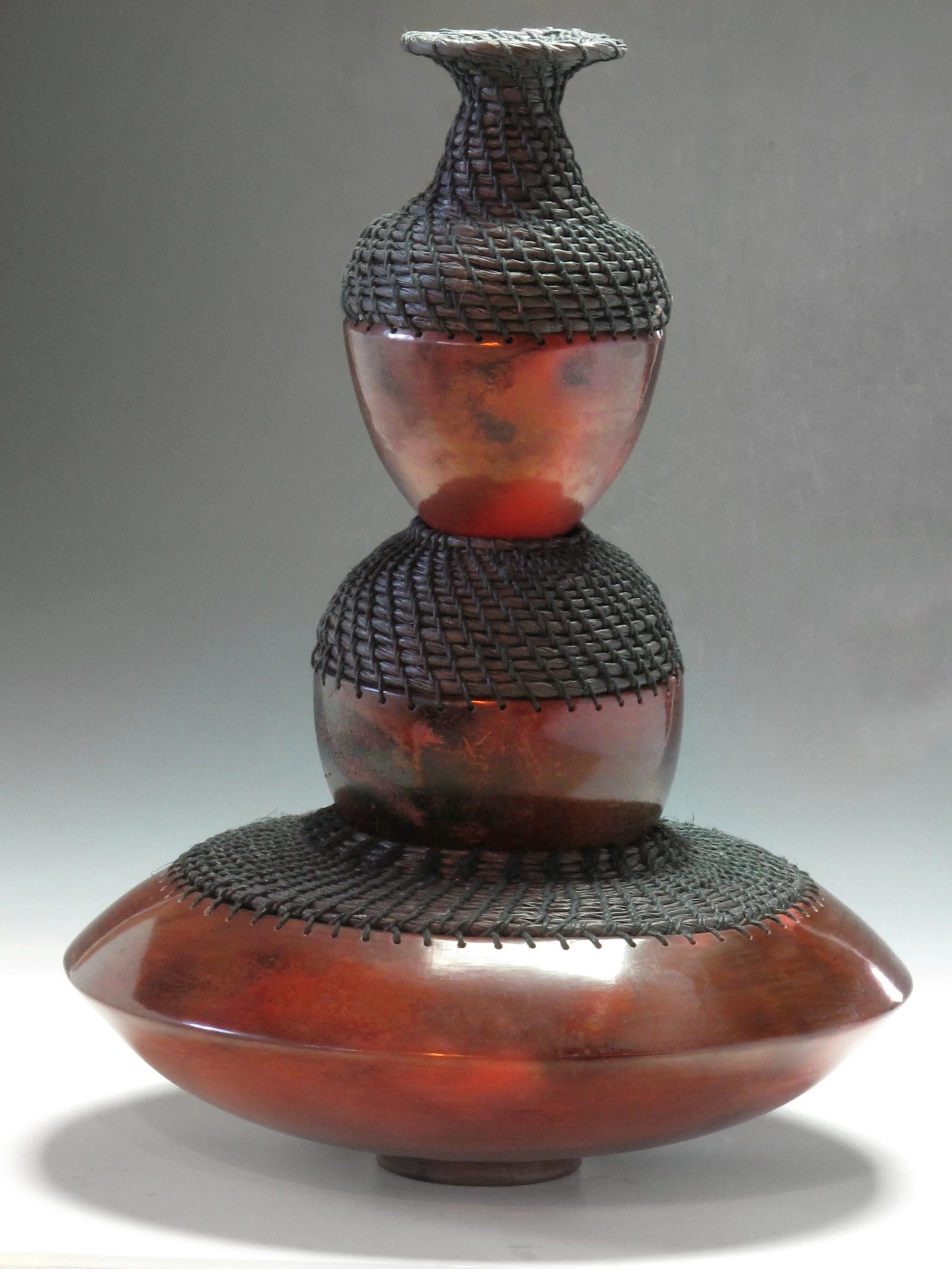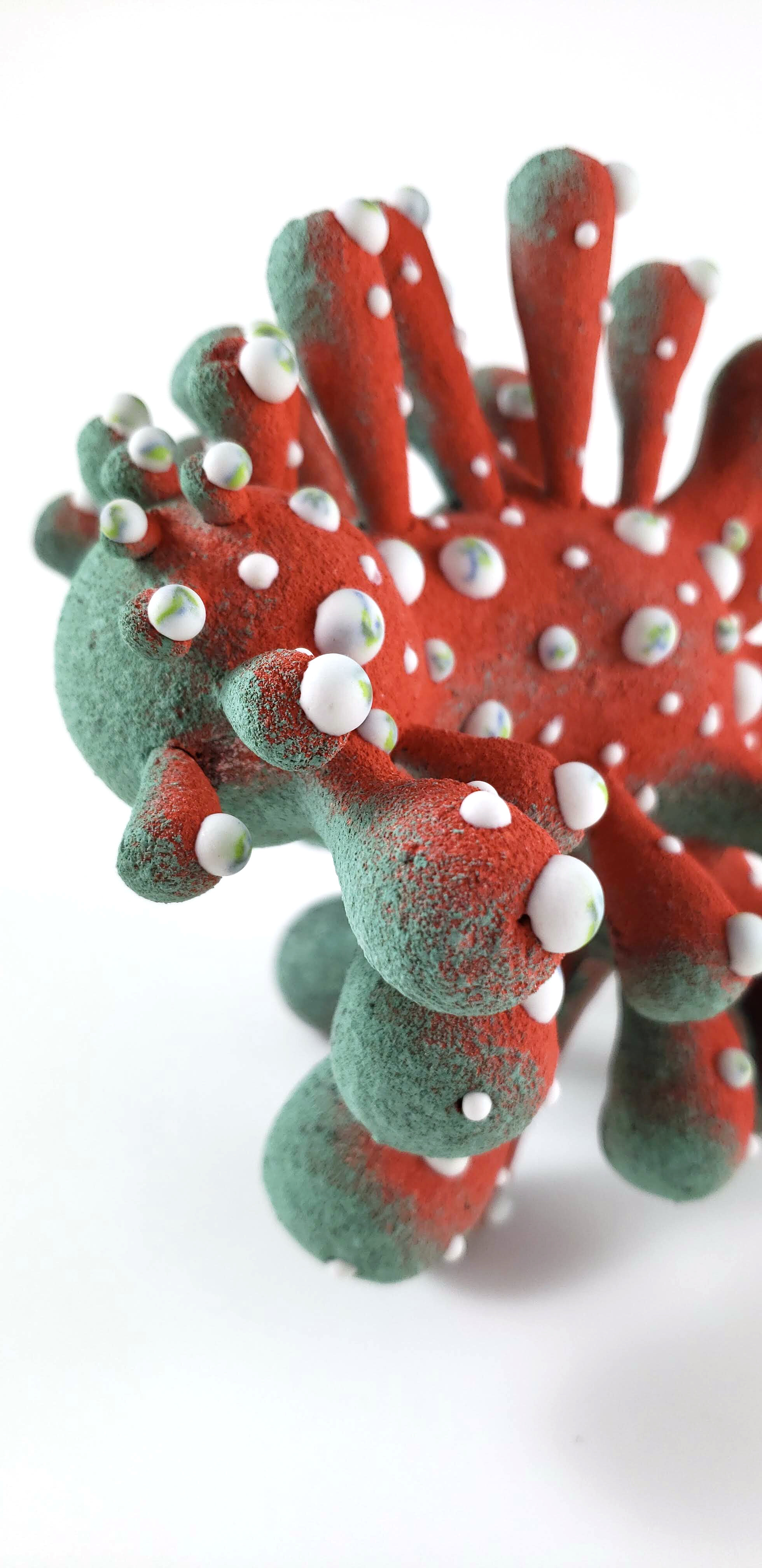PJ Anderson
Our bodies are a repository of memories and embodied knowledge. Diasporic artists often tap into this, reaching so deeply and intuitively inwards through their process that they unearth that which is a birthright: an ineffable material connection that evokes ancestral relation.
PJ Anderson’s art practice is a testament to the timeless ingenuity of African and Indigenous ceramics. Her dedication to certain methods results in a refusal of hierarchy when it comes to which processes and histories of making that are valued over others. Through her reclamation of traditional ceramic techniques — and their material kinship with fibres — Anderson explores the weaponization of culture, the dynamics of digital space and the complexities of identity.
PJ Anderson, Liberte, 2020. Smoke fired ceramic and metal, 160 x 63 x 63 cm. COURTESY OF THE ARTIST.
Afropresentism, a concept developed by guerilla theorist Neema Githere, asks: “How are we alchemizing our displacement? How are we activating the past, to put the present in motion towards the future?” [1] Anderson boldly responds with every coiled vessel sculpture she creates.
PJ Anderson, Red Series, 2016. Earthenware, terra sigillata, woven paper, hemp cord. 42cm x 30cm x 30 cm. Photo: Crystal Nykoluk. COURTESY OF THE ARTIST.
Originally from Thompson, Man., Anderson completed her BFA at the University of Manitoba, where she studied ceramics and anthropology. As a research assistant for an anthropology professor in 2009, she travelled to South Africa, where she worked alongside Zulu ceramic artisans for the first time. She later returned as an artist-in-residence at the University of KwaZulu Natal in 2012. In 2018, Anderson spent time in New Mexico, where she learned some of the “practicalities of fabrication, formation and decoration through workshops and research” with the Pueblo pottery families. Since these experiences, she has returned to certain techniques that allow her to express themes related to her multicultural background and Canadian identity and to environmental issues and digital social justice.
PJ Anderson learning at the University of KwaZulu Natal, 2009. Photo: Dr. Kent Fowler. COURTESY OF THE ARTIST.
This article is an excerpt.
Read the article in full in the Fall/Winter 2022 issue of Studio Magazine.










